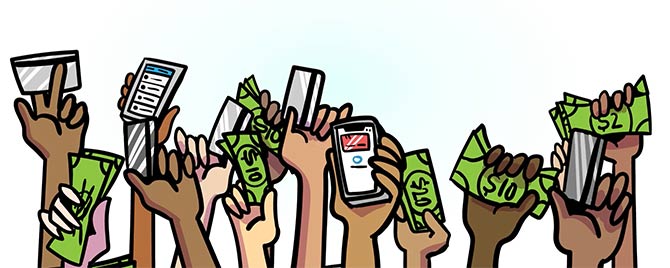Some of us love paying with cold, hard cash while others prefer racking up credit card rewards points. No matter which camp you fall in, chances are how you decide to pay largely depends on if you’re getting ice cream, picking up a new big-screen TV, or paying a bill.
When and where do consumers use cash? How often do they reach for a debit or credit card? Check out our quick video recap of findings from the Federal Reserve’s 2019 Diary of Consumer Payment Choice study.
Watch our quick summary of research findings from the Federal Reserve’s 2019 Diary of Consumer Payment Choice (video, 1:07 minutes).
Transcript
We asked 2,873 people to take part in a study on their payment choice. They reported all of their payments and transactions over three consecutive days, staggered throughout October.
The high-level findings are:
- Consumers used cash in 26 percent of transactions, down from 30 percent in the previous year. This is because consumers are using slightly less cash and rely on their cards more for everyday purchases.
- Debit cards were used the most, accounting for 28 percent of payments.
- Credit cards accounted for 23 percent of payments, a 2 percentage point increase.
- Cash was used heavily for small-value payments, representing 49 percent of payments under $10.
- The share of cash use among individuals under 25 years old is the highest of any age group.
- While in-person payments accounted for 73 percent of all transactions, participants used cash 35 percent of the time for in-person purchases.
Keeping up with the latest payment trends? Stay tuned for results of the Fed’s 6th annual Diary of Consumer Payment Choice study coming summer 2020.
You may also like:
- Under $10: Nearly Half of Consumers Pay with Cash
- Impacts of Cashless Business on Financial Inclusion
- Why Is the Federal Reserve’s Balance Sheet Still So Big? Our Animated Economic Letter Explains
- Rx Opioid Side Effects on Workforce Participation: An Animated Economic Letter
- Does the Fed Print Money?
The views expressed here do not necessarily reflect the views of the management of the Federal Reserve Bank of San Francisco or of the Board of Governors of the Federal Reserve System.
